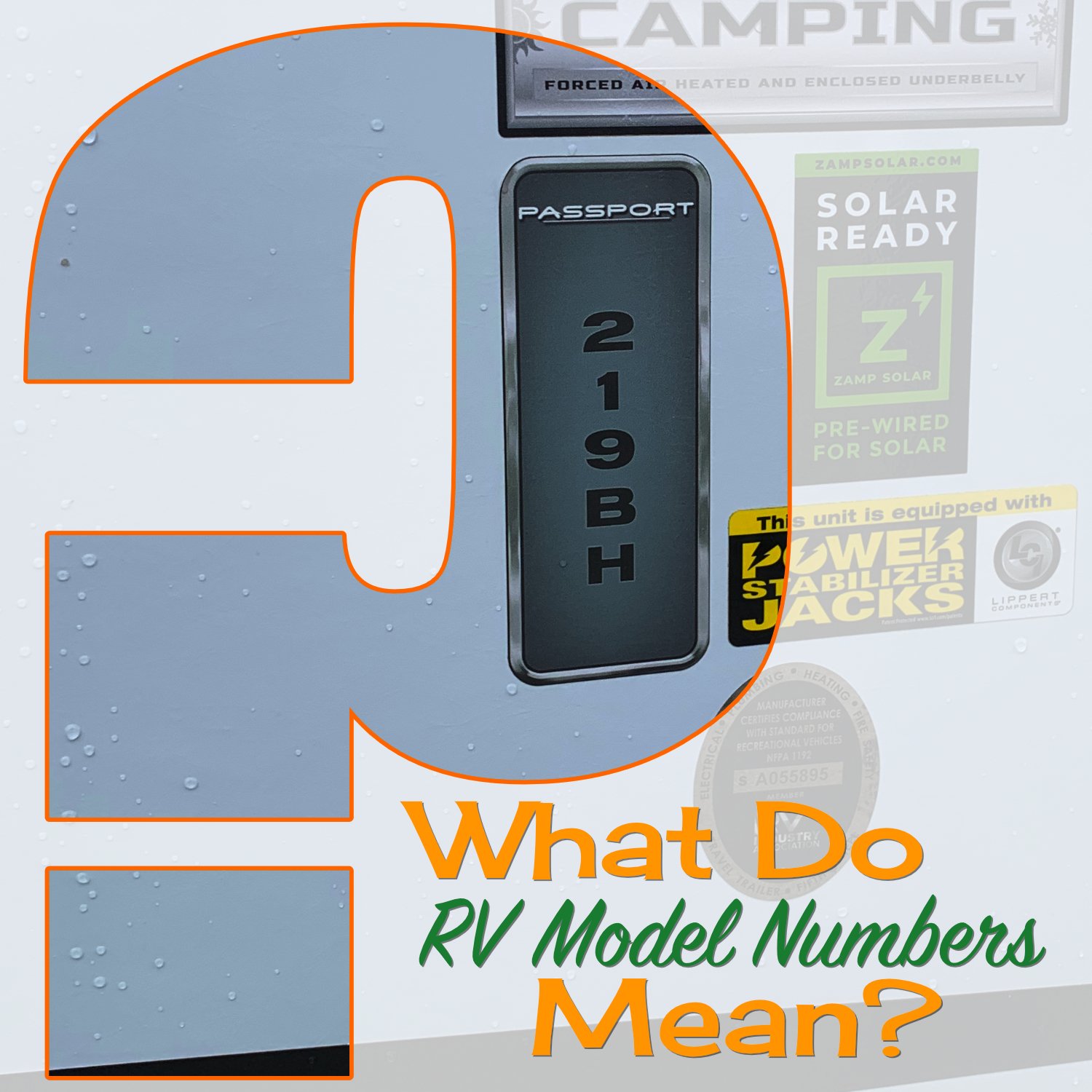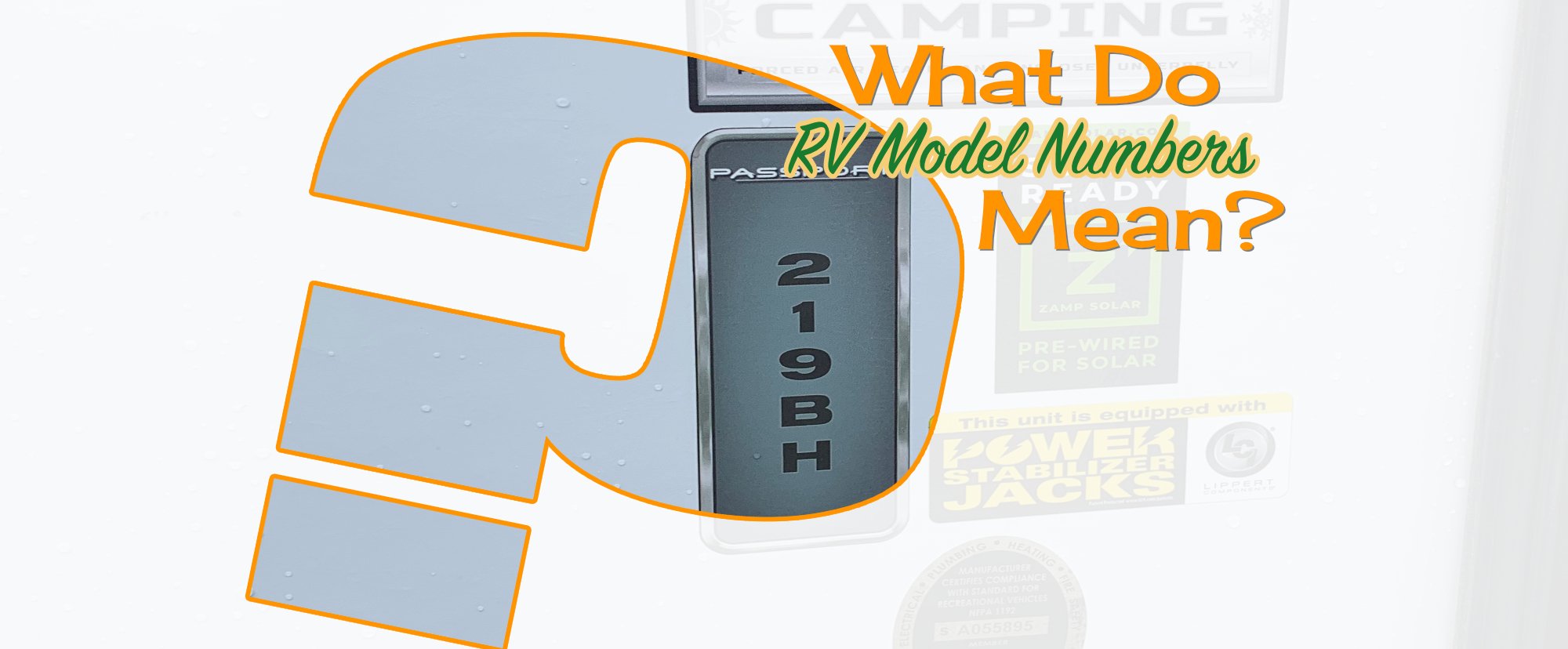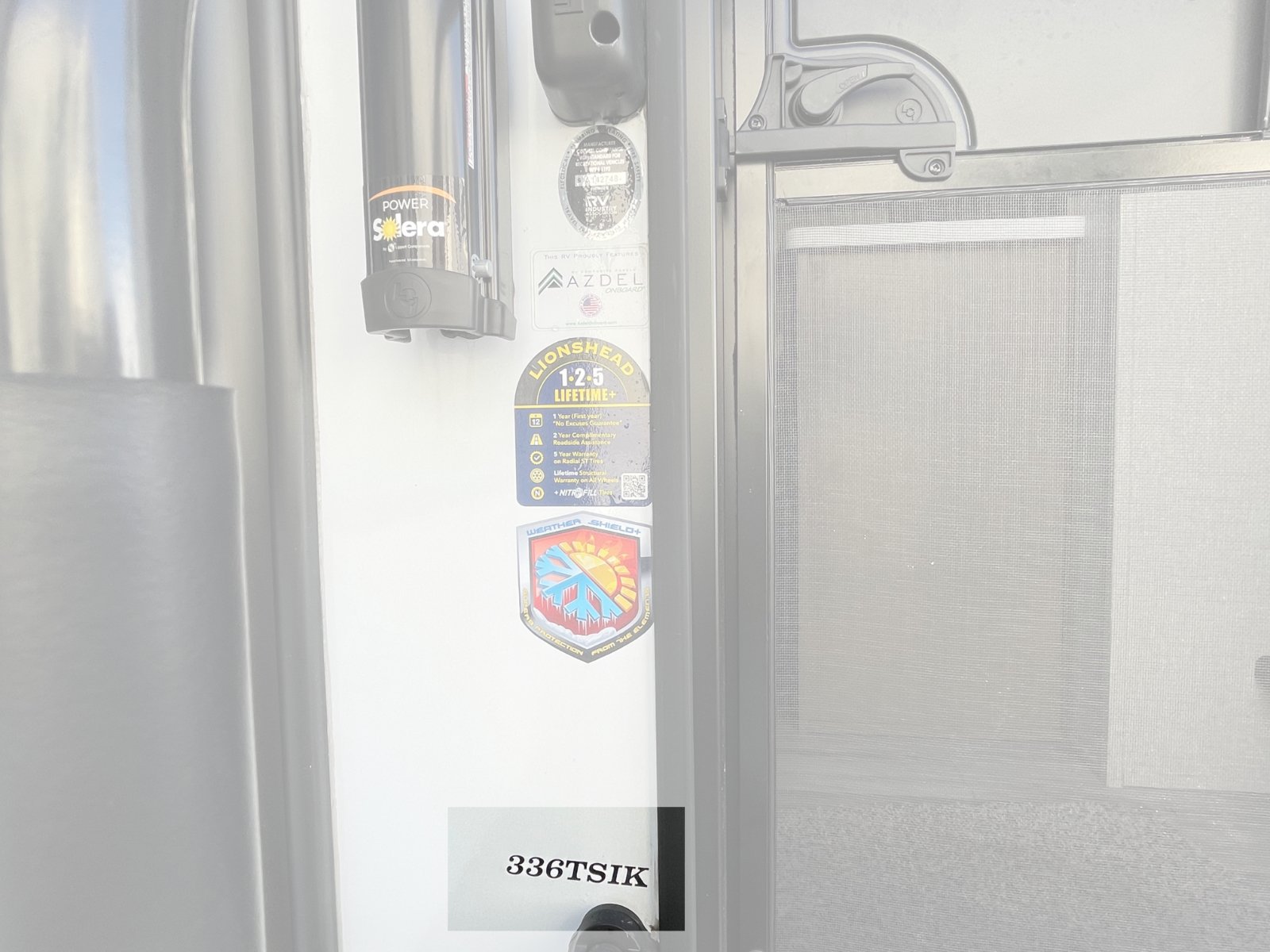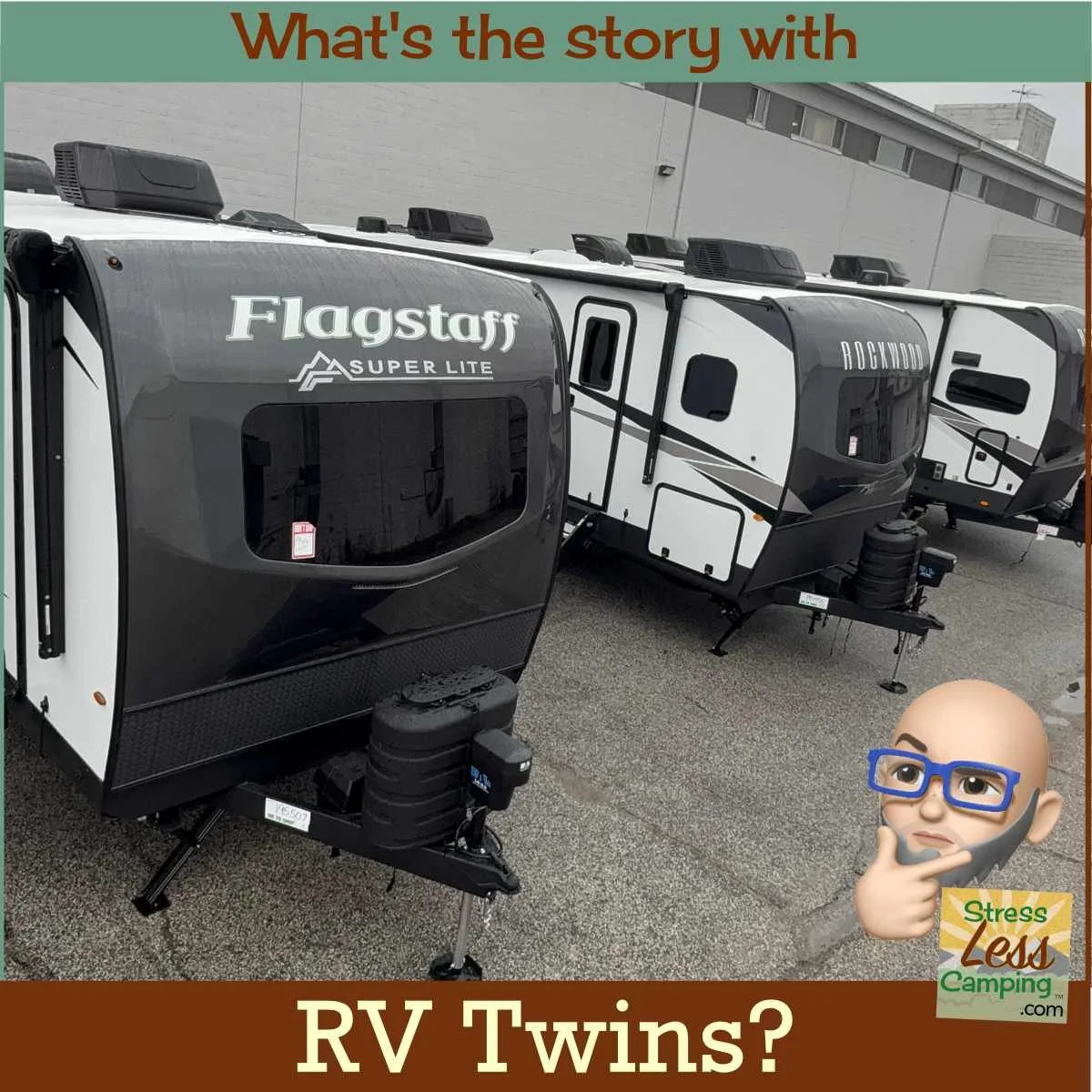What do RV model numbers mean?
What do RV model numbers mean?
What do RV model designations mean? What exactly is a 1905s, 212RBE or a 22MLSWE? Do these numbers have any meaning or are they completely nonsense? We have the answer.
The model numbers used by RV companies have no standards and there is no universally translatable measure to carry from one brand to the next. In fact there are sister brands with almost completely different designations for exactly the same RV.
And, there are RVs that have the same model designation but are built in different plants and have rather different features, equipment or dimensions. But let’s start with the numbers.
What do the numbers mean?
Starting with the numbers you can see almost every RV has a numerical designation. Unfortunately there is no standard for this.
Sometimes this number is just a model number. For example, the rPod 201 and 202 are the exact same length, but one has no slide room and a very different layout from the other, which does have a slide. Further, both of these trailers are 25 feet in length.
Even more confusing, the Flagstaff Micro Lite 22TBS and the Rockwood Mini Lite 2204s are the exact same trailer, but one is branded a Flagstaff and the other sold by Rockwood dealers. The only difference are the model numbers and the stickers. Period.
While the numbers in the model designation don’t specifically spell out the length of the RV, you can sort of guess as to the length of the RV by using the model numbers.
For example, the aforementioned rPods are about 20 feet in the length of the body. The Rockwood is about 22 feet in length for the body. Then, on all travel trailers, you have to then add the tongue.
And some are reflective of a dimension but it can be the interior length of the body or the exterior length. Again, no standards. And no guarantees that the number has any relevance to the overall size of what you’re getting.
Here’s a bit more proof of that - Grand Design’s Reflection line of fifth wheels has both the 31MB and the 311BS and the two are both within just a few inches over 36 feet long.
No matter which brand you look at you’ll find this - the model number is more a very loose guess as to the overall length and also simply that - a model number.
What about the letters?
The letters that follow the numbers actually do have some meaning. But this, too, is not consistent from brand to brand. And there is almost no standard.
Almost.
There are a few letters almost everybody uses and those are BH. In almost every case where an RV features bunks they have the letters “BH” somewhere in the model designation. This is probably the closest thing you can get to a standard.
But there is a bit of logic in the letters, too.
For example, Keystone’s Bullet 212RBSWE features a Rear Bath, a Slide and is the Western Edition. Not as in cowboys and such, but Keystone, like many other manufacturers, has plants in Indiana as well as on the west coast. In the case of Keystone, their plant in Pendleton, Oregon will earn the RV the WE designation.
In fact they offer both the 212RBS and 212RBSWE. The reason for this is that the west coast is a huge RV market and it just makes sense to have an assembly line out west. This significantly reduces shipping costs which can be thousands of dollars, especially as shipping costs rise.
Of course shipping costs for RV parts also factor in so the equation and the Western Editions are sometimes more money than the non WE models. But then, sometimes they’re less expensive.
Since a lot of what we buy nowadays is made in China and Chinese goods are shipped to the west coast it would seem that western editions would be cheaper. But they’re often not. What happens is that parts are shipped to Indiana and then back out to the west coast. I’m not in charge of the logistics, but it’s how things are done.
No, it doesn’t make sense to me either. And it adds to the costs a lot of west coast buyers are paying.
In summary
Decoding the model numbers of RVs is sort of like the weather. While you can use all the science you want, sometimes it just doesn’t make any sense whatsoever. Other times it’s sort of close and, on rare occasions, the numbers make perfect sense.
So, you can use the numbers and letters to get some idea of what RV they’re dealing with, but the names make as much sense as calling a car a Cougar or a Clipper. What’s in a name? Only a good time, essentially.






